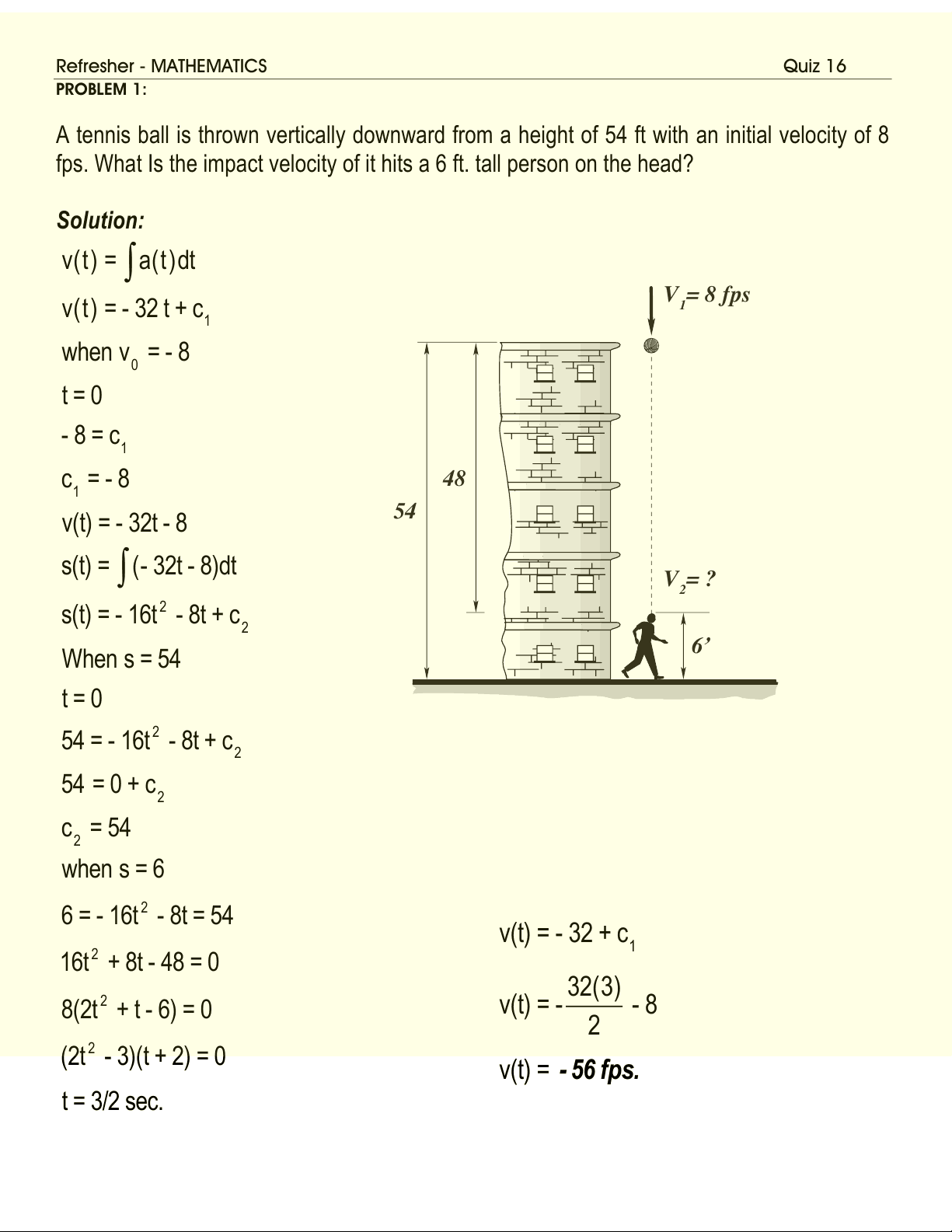
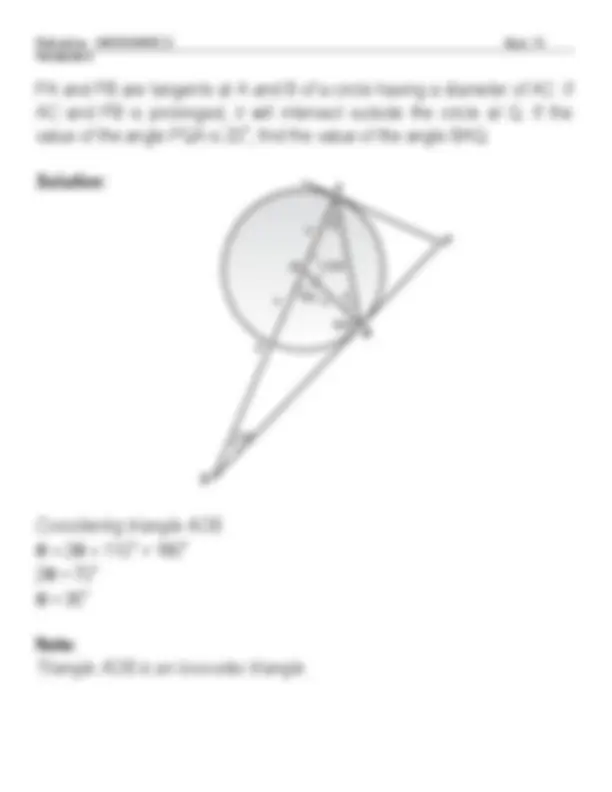
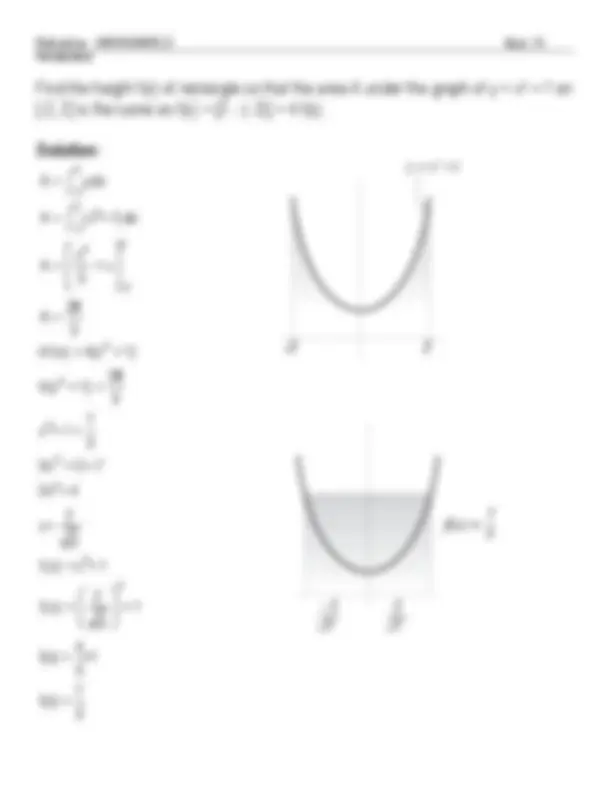
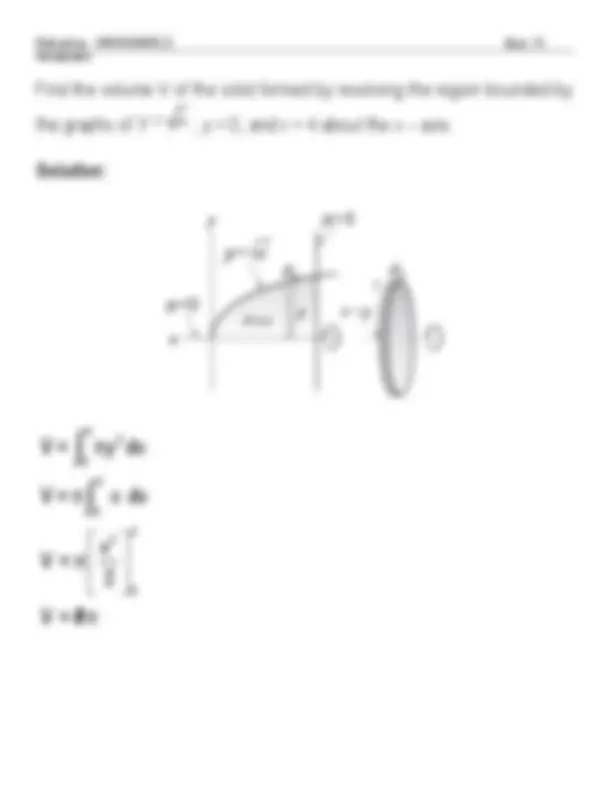
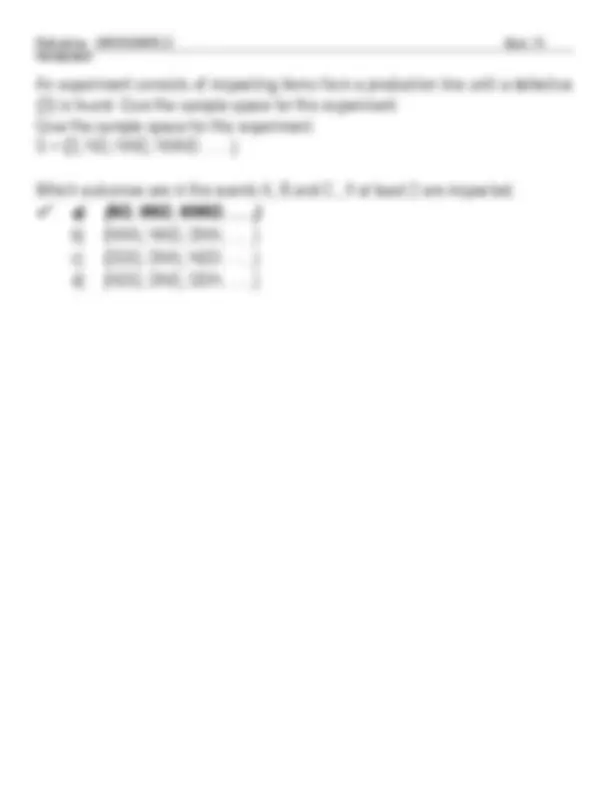
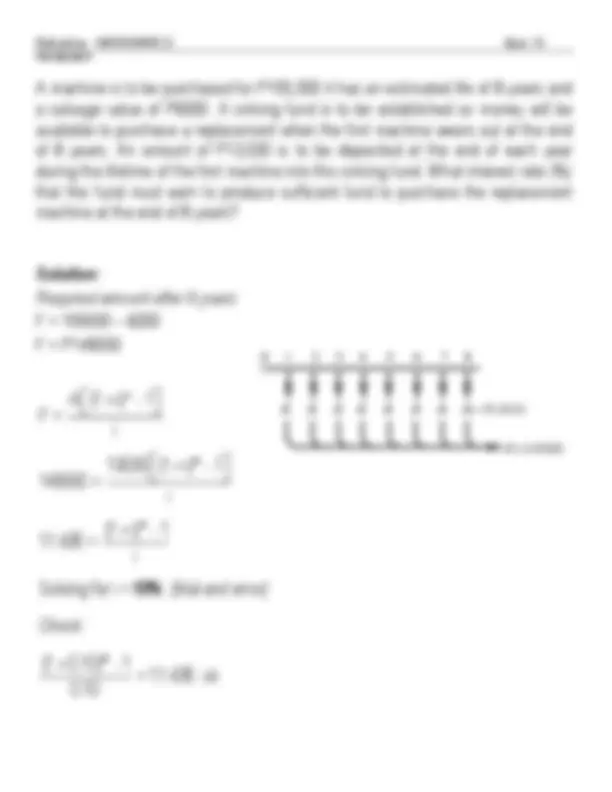
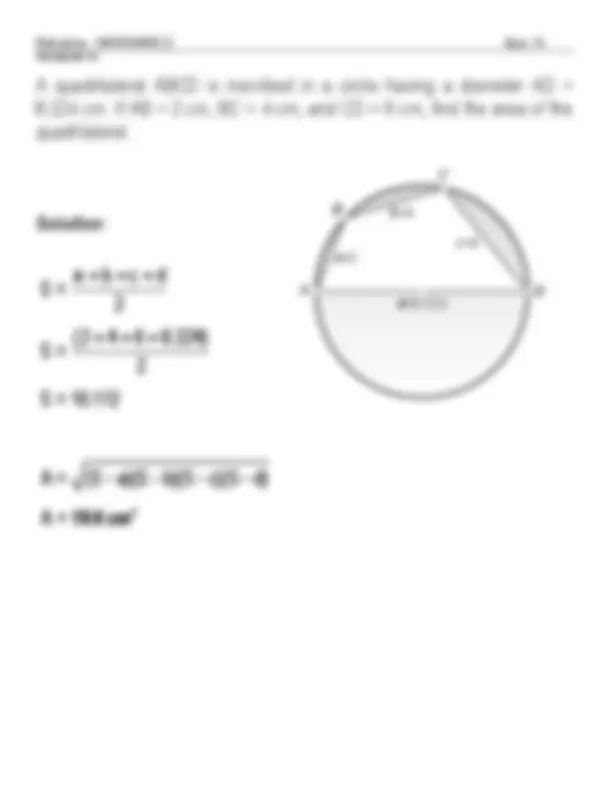


Study with the several resources on Docsity

Earn points by helping other students or get them with a premium plan


Prepare for your exams
Study with the several resources on Docsity

Earn points to download
Earn points by helping other students or get them with a premium plan
Community
Ask the community for help and clear up your study doubts
Discover the best universities in your country according to Docsity users
Free resources
Download our free guides on studying techniques, anxiety management strategies, and thesis advice from Docsity tutors
Solutions to various mathematical problems related to topics such as geometry, probability, and calculus. The problems are presented in a quiz format and include questions on finding impact velocity, calculating areas of triangles and quadrilaterals, determining nominal interest rates, and solving partial fractions. The solutions are presented in a step-by-step format and include equations and formulas. suitable for students studying mathematics at the high school or university level.
Typology: Quizzes
1 / 12

This page cannot be seen from the preview
Don't miss anything!







PROBLEM 1: A tennis ball is thrown vertically downward from a height of 54 ft with an initial velocity of 8 fps. What Is the impact velocity of it hits a 6 ft. tall person on the head? Solution: when s = 6 6 = - 16 t 2
v(t) = - 56 fps. v(t) = a(t)dt
v(t) = - 32 t + c 1 when v 0 = - 8 t = 0
PROBLEM 2 :
A B C r^ r (^30) r 36 48 A = abc 4 r
f(c) = 7 3
- 2 3 2 3 PROBLEM 4 : Find the height f(c) of rectangle so that the area A under the graph of y = x^2 + 1 on [-2, 2] is the same as f(c) = [2 - (- 2)] = 4 f(c). Solution: A = ydx
PROBLEM 5 :
2
0 4
0 4
2
0 4
x y dx y y =√ x x = x = Area dx r = y
PROBLEM 7 :
r
PROBLEM 8 : An experiment consists of inspecting items from a production line until a defective (D) is found. Give the sample space for this experiment. Give the sample space for this experiment. S = {D, ND, NND, NNND…….} Which outcomes are in the events A, B and C , If at least 2 are inspected.
b) {NNN, NND, DNN…….} c) {DDD, DNN, NDD…….} d) {NDD, DND, DDN…….}
PROBLEM 10 :
S = a + b + c + d 2 S = ( 2 + 4 + 6 + 8. 224 ) 2 S = 10. 112 A = (S - a)(S - b)(S - c)(S - d) A = 19. 6 cm 2 A (^) D C B a = b = d =8. c =
PROBLEM 11 :
x 2
x 2 (x 2
2
4
3
2
2
2